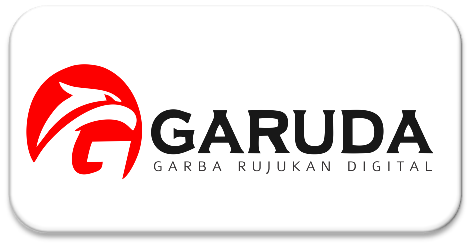Effect of Cutting Speed, Feed-rate and Depth of Cut on the Surface Roughness Level of ST-37 Steel in Shaping Proces
Abstract
The application in the industrial world, the use of scrap machines by operators pay little attention to the surface roughness of objects produced. The roughness that occurs is influenced by machining parameters such as cutting speed, feed motion, and cutting thickness. The purpose of this study was to determine the effect of cutting speed, feed motion and cutting thickness on the level of roughness of ST 37 steel surface in the scrap process. This type of research is an experimental method that determines the level of steel surface roughness from variations in cutting speed, feed motion, and cutting thickness to ST 37 steel surface roughness. The material used is 70 mm long, 25 mm wide, and 25 mm high. Data processing results from the level of roughness testing using the SPSS version 16.0 application. The results of data analysis showed (1) the significant effect of cutting speed on the level of surface roughness of 5.5%. (2) the significant effect of feeding on the level of surface roughness of 60.9%. (3) significant effect between cutting thickness on surface roughness level of 0.2% (4) significant influence between cutting speed, feed motion, and cutting thickness on the level of surface roughness with a 66.6% influence. Based on data analysis, it can be concluded that cutting speed, feeding motion, cutting thickness are factors that influence the level of steel surface roughness of ST 37 in the scrap process.
Keywords: Cutting Speed, Feed Rate, Depth of Cut, Roughness Level, Experimental.
References
N. Erizon, M. Iksan Ardiyansyah, Jasman, and Yufrizal. Effect of Cooling Media on Steel Hardness ST 37 On Conventional Lathe Process. Teknomekanik 1, no. 1 pp. 6-11, 2018.
S. Mulyadi "Pengaruh Kecepatan Potong, Gerak Makan Dan Ketebalan Pemotongan Terhadap Getaran Benda Kerja Pada Proses Shaping." ROTOR 5, no. 1 pp. 36-43,2012
Farel Rain.2010. “ Analisis Umur dan Pegaruh Varriabel Proses pada Permesinan Shaping Permukaan Baja Karbon Tinggi Terhadap Keausan Pahat Karbide”. Universita Lampung. Lampung
Ramadhan, and H. Alfian "Optimasi Parameter Pemesinan Pada Mesin Shaping Model L-450 Menggunakan Algoritma Genetika." e-Dinamis7, no. 3, 2013.
Widarto. Teknik Pemesinan Untuk Sekolah Menengah Kejuruan Jilid 1. Jakarta. Depdiknas. 2008.
Sudji Munadi. “Dasar- Dasar Metrology Industry”. Jakart: PPLK. 1998.
D. Seprianto, and Syamsul Rizal. "Analisa Pengaruh Perubahan Ketebalan Pemakanan, Kecepatan Putar pada Mesin, Kecepatan Pemakanan (Feeding) Frais Horisontal Terhadap Kekasaran Permukaan Logam." AUSTENIT 1, no. 01, 2009.
Taufiq Rochim. “Teori Dan Teknologi Proses Pemesinan”. FTI-ITB: Bandung. 1993
Taufiq Rochim. “Spesifikasi, Metrologi & Kontrol Kualitas Geometrik”. Bandung: ITB Bandung. 2001.







